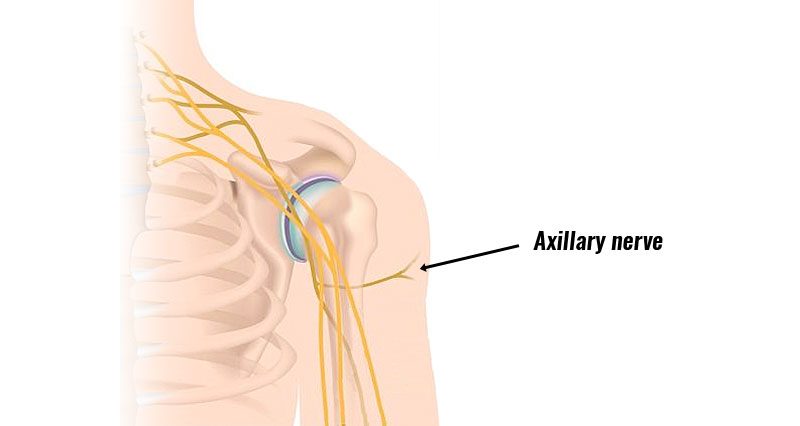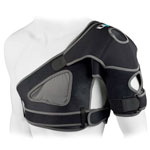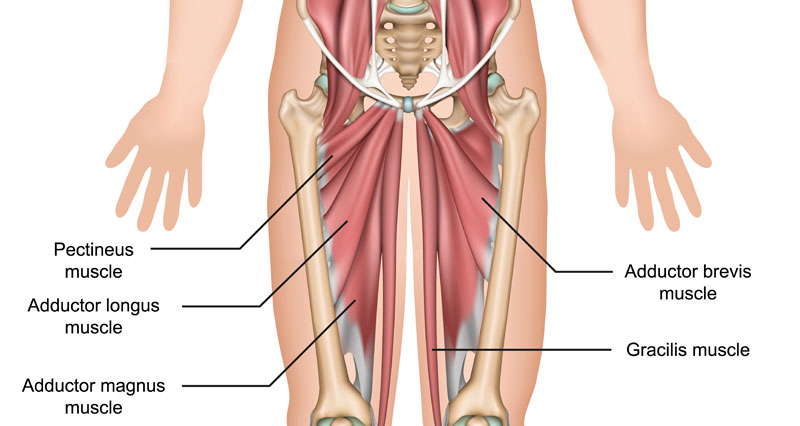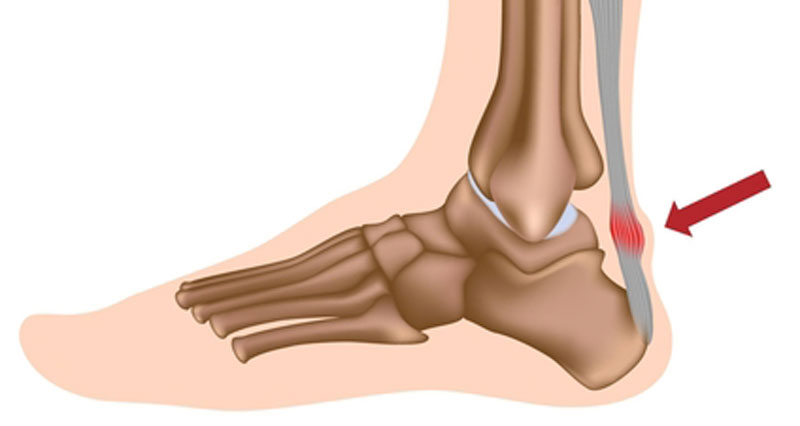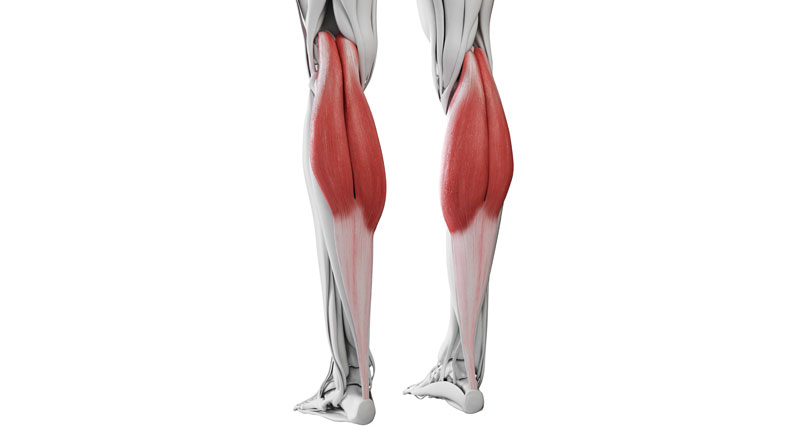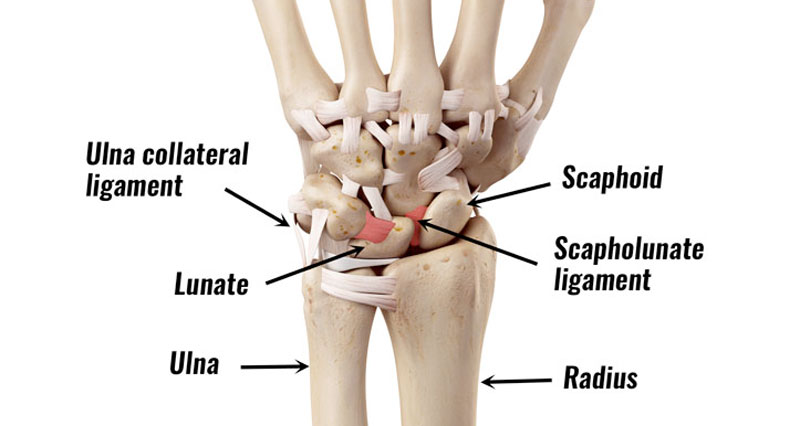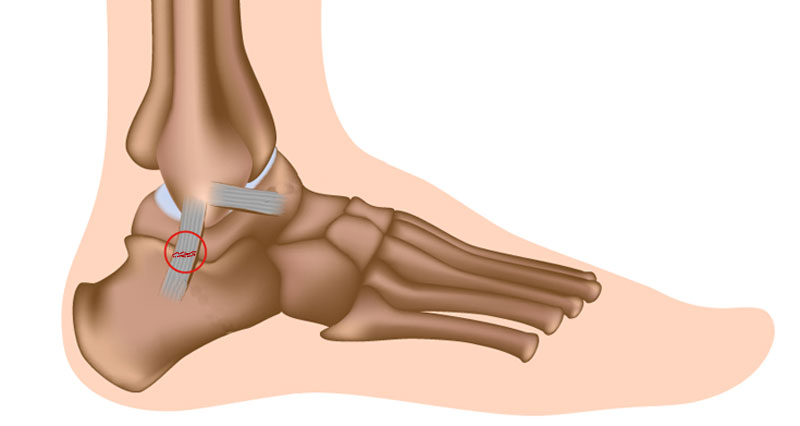Axillary nerve injury is also referred to as axillary nerve compression and quadrilateral space syndrome. It is not a particularly common injury and usually occurs as a result of a direct impact to the outer arm, or from throwing. Here we explain the symptoms, causes and treatment of Axillary nerve injury.
Symptoms of an Axillary nerve injury
- Numbness over the deltoid muscle on the outside of the upper arm.
- Pain at the back of the shoulder. This is likely to be poorly localized, or difficult to pinpoint exactly where the pain is.
- Difficulty raising the arm out to the side. This is because of weakness in the deltoid and teres minor muscles.
- As a result, the deltoid muscle will appear smaller or wasted away, especially in long-term chronic injuries.
What causes Axillary nerve injury?
Traumatic injury
Injury to the Axillary nerve may be from a traumatic injury such as a shoulder dislocation or a direct impact to the outside of the upper arm. In this case, the damage is done to the nerve. Either the myelin sheath (which surrounds the nerve) or the axon (the nerve itself) is injured. It may heal but also may cause permanent disability, depending on the extent of the damage.
Nerve compression
The Axillary nerve may also be compressed. This causes more temporary symptoms, rather than permanent damage. A common example of this is using crutches incorrectly, especially with the very old-fashioned axillary type crutches which apply pressure into the armpit.
Quadrilateral space syndrome
Another condition to be aware of is Quadrilateral Space Syndrome. This occurs when the Axillary nerve is compressed within the quadrilateral space at the back of the shoulder. This is seen more often in throwers. As well as the common Axillary nerve injury symptoms listed above, the patient may also complain of pain in the back of the shoulder.
Treatment
Referral and Diagnosis
Patients suffering from an axillary nerve injury should be promptly referred to a neurologist for specialized evaluation and management. To confirm the diagnosis and assess the extent of the nerve damage, an electromyography (EMG) may be conducted. This diagnostic tool helps in understanding the severity and guiding the appropriate treatment plan.
Treatment Approaches
In many cases, specific treatment may not be necessary as symptoms often improve gradually as the nerve heals. However, to manage pain and inflammation, anti-inflammatory medications may be prescribed. These medications help reduce swelling around the nerve, thereby alleviating compression and discomfort.
Physical therapy plays a crucial role in the treatment of axillary nerve injuries. It is essential to maintain muscle strength during the recovery process. A structured physical therapy program, focusing on targeted shoulder exercises, can prevent muscle atrophy and promote healing. Engaging in these exercises helps in maintaining mobility and supporting nerve recovery.
Recovery Timeframe
The recovery time for axillary nerve injury varies widely among individuals. It can range from as short as six weeks to as long as six months or more, depending on the severity of the injury and the patient’s overall health. Regular follow-ups with healthcare providers are necessary to monitor progress and adjust treatment plans as needed.
Surgical Intervention
In cases where symptoms do not improve or if they worsen over time, surgical intervention may be required. Surgery is considered to further investigate the problem and to provide relief if non-surgical treatments are ineffective. This approach aims to directly address the underlying issue, facilitating better outcomes for the patient.
Additional Information
In addition to medical treatments, engaging in specific shoulder exercises is highly recommended. These exercises help in maintaining muscle strength and promoting nerve healing. Following a well-structured rehabilitation program, tailored to individual needs, can significantly aid in the recovery process. It is crucial for patients to adhere to their prescribed exercise routines and attend all physical therapy sessions to achieve the best possible recovery.
By following these comprehensive steps, patients with axillary nerve injury can optimize their recovery and minimize the risk of long-term complications. Regular communication with healthcare providers and adherence to the recommended treatment plan are key to achieving successful outcomes.
References & further reading
- Lee S, Saetia K, Saha S et al. Axillary nerve injury associated with sports. Neurosurg Focus 2011;31(5):E10.
- Galvin JW, Eichinger JK. Outcomes Following Closed Axillary Nerve Injury: A Case Report and Review of the Literature. Mil Med 2016;181(3):e291–7.
